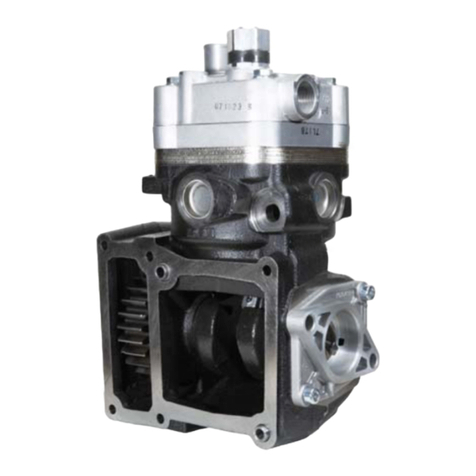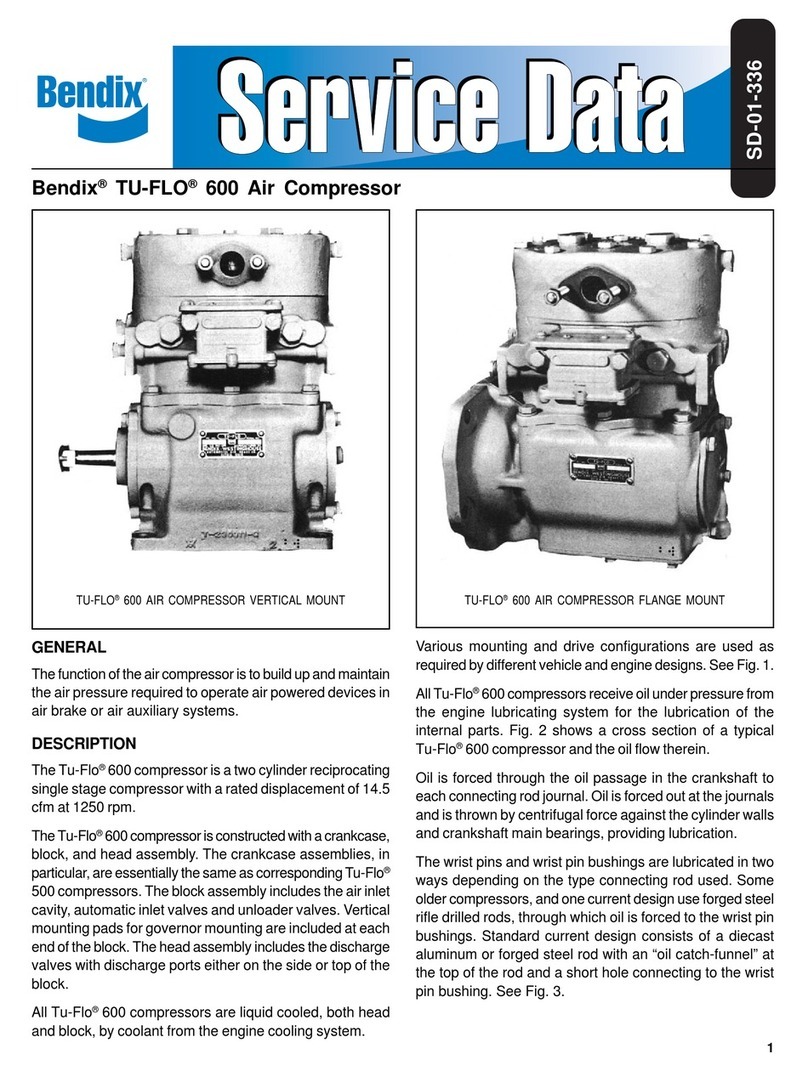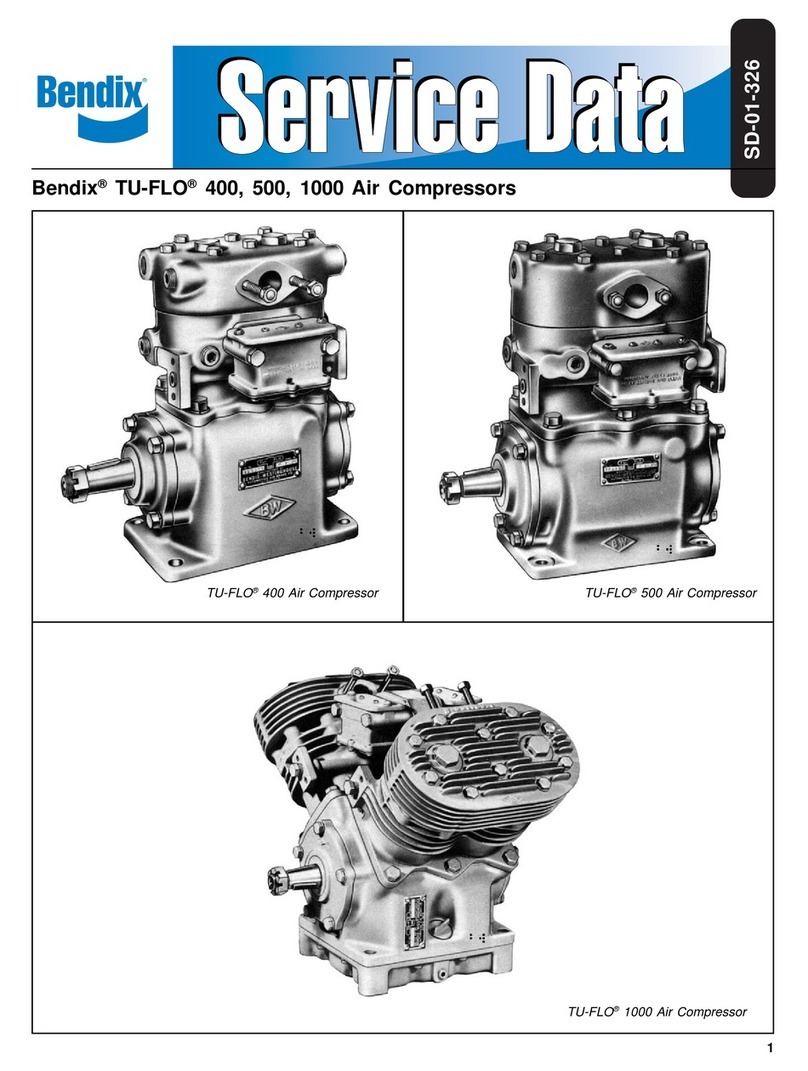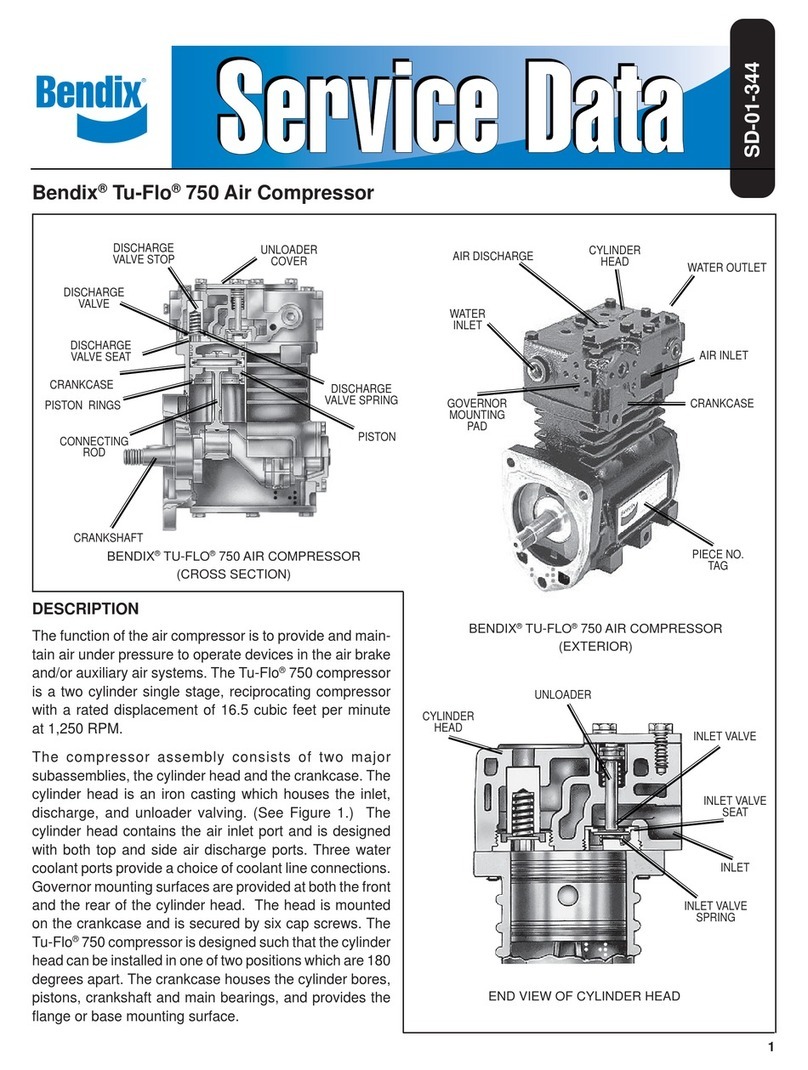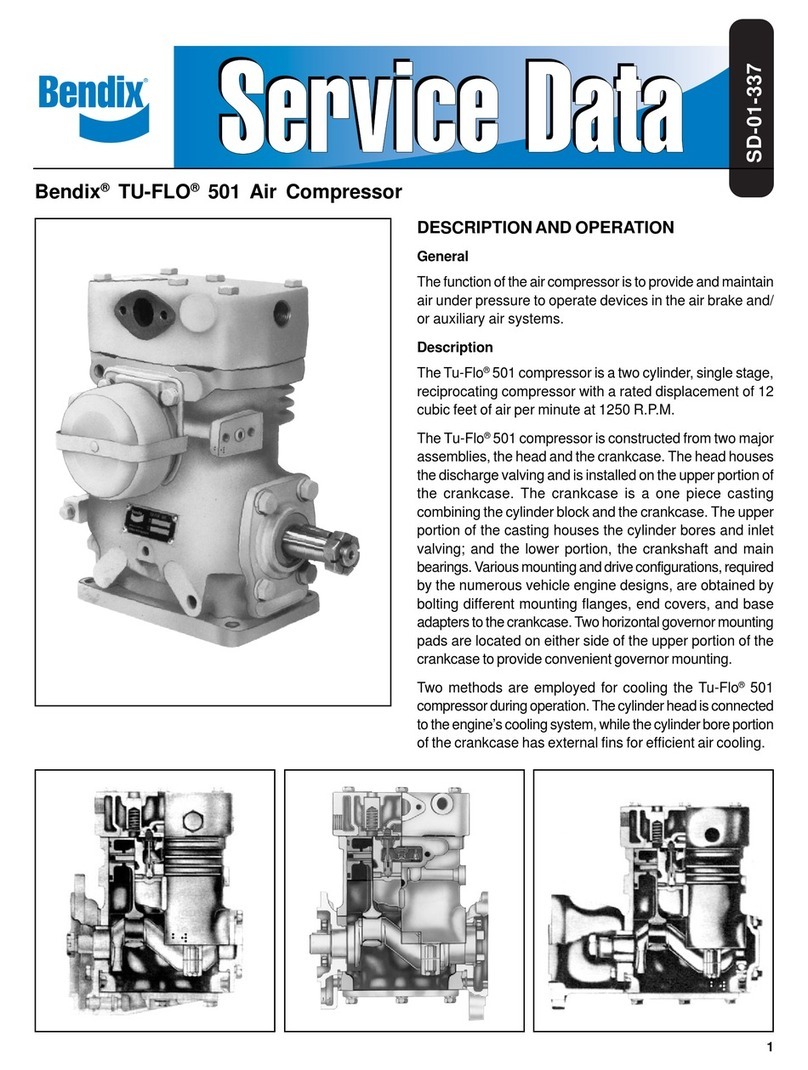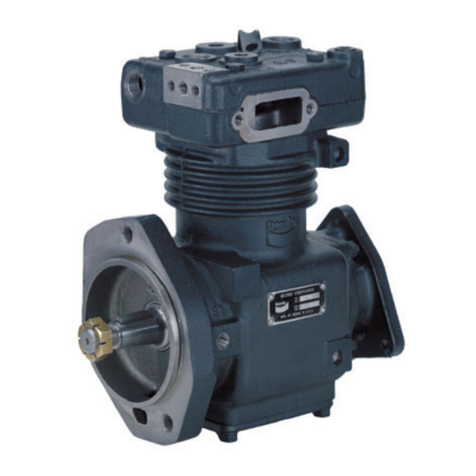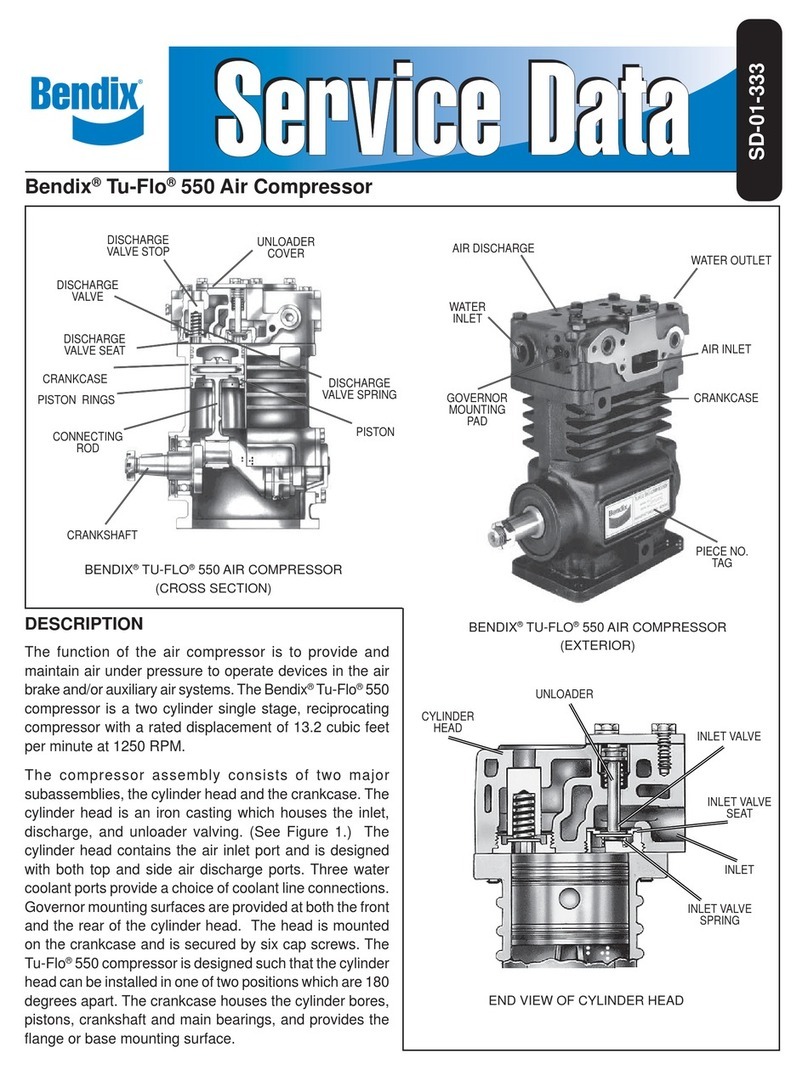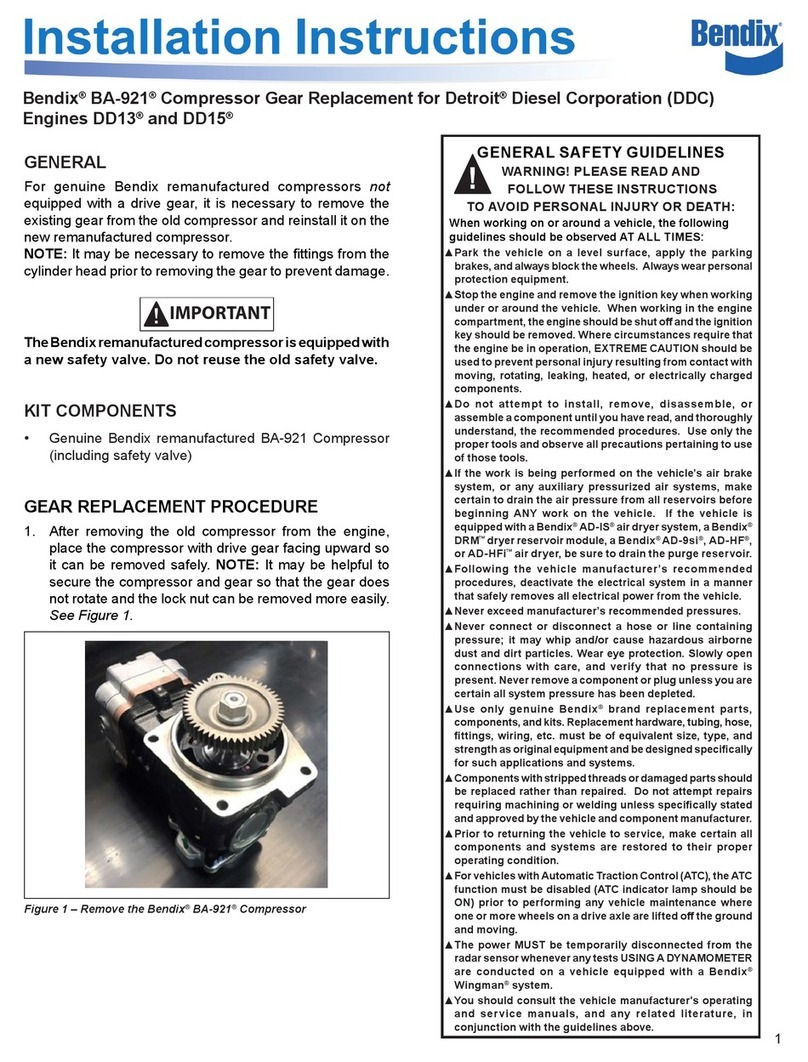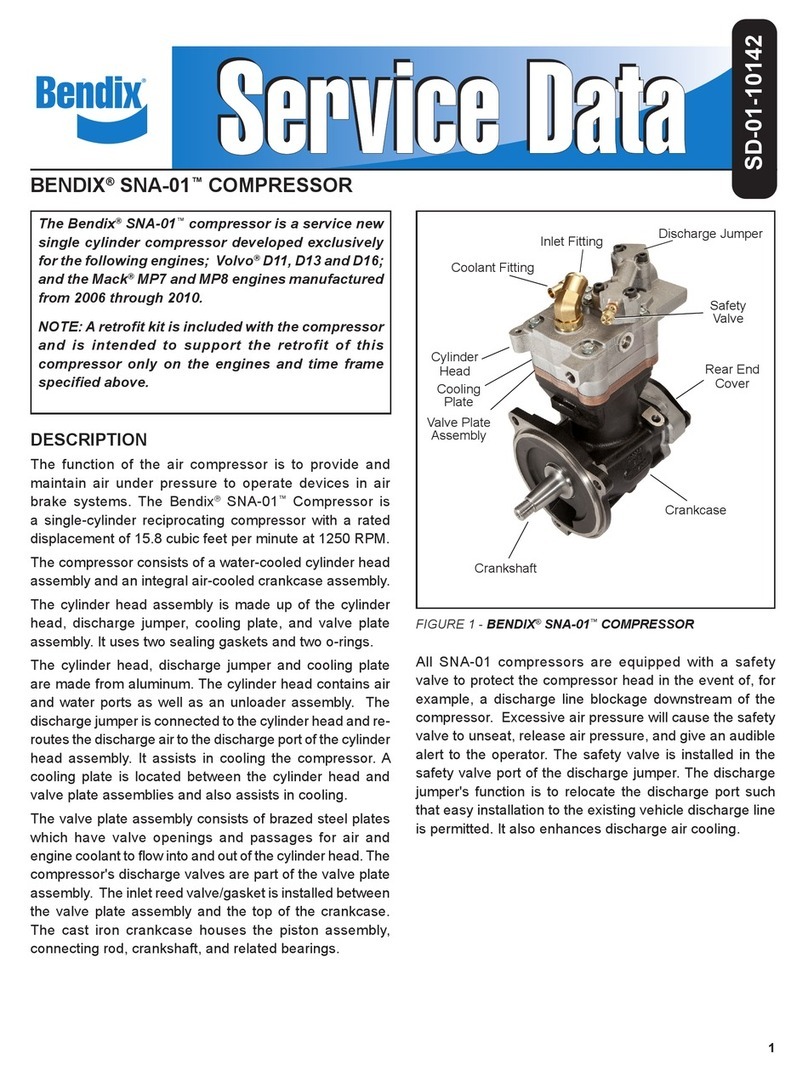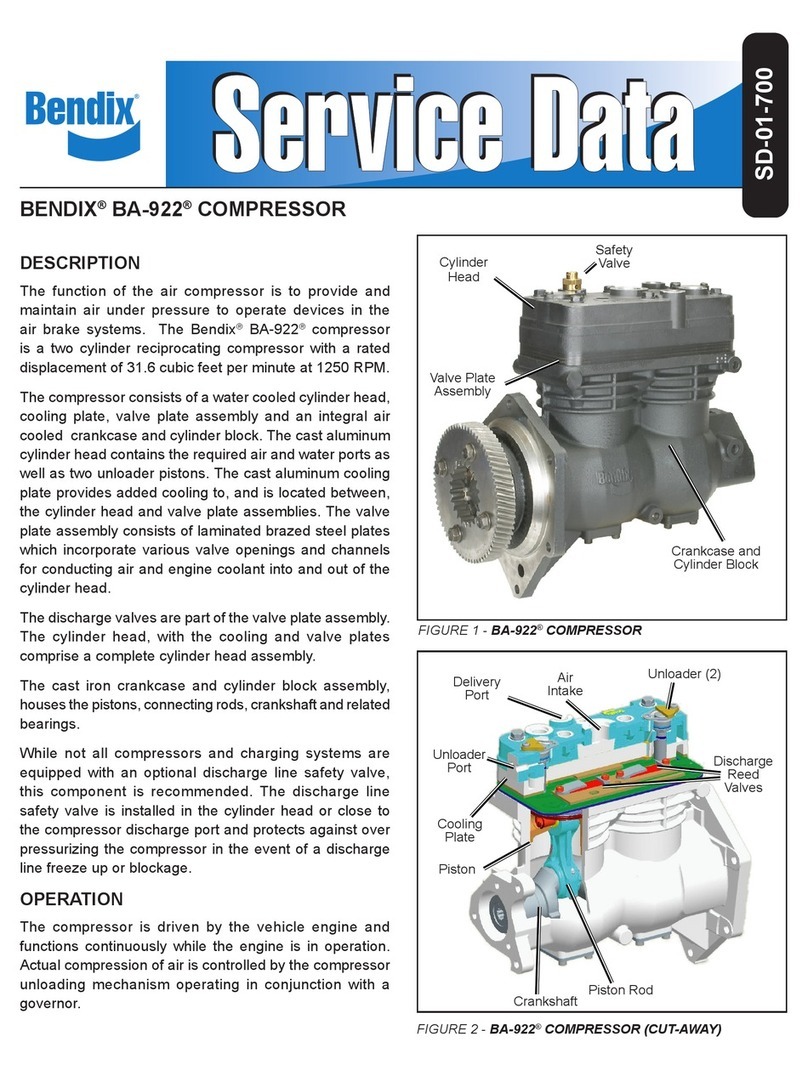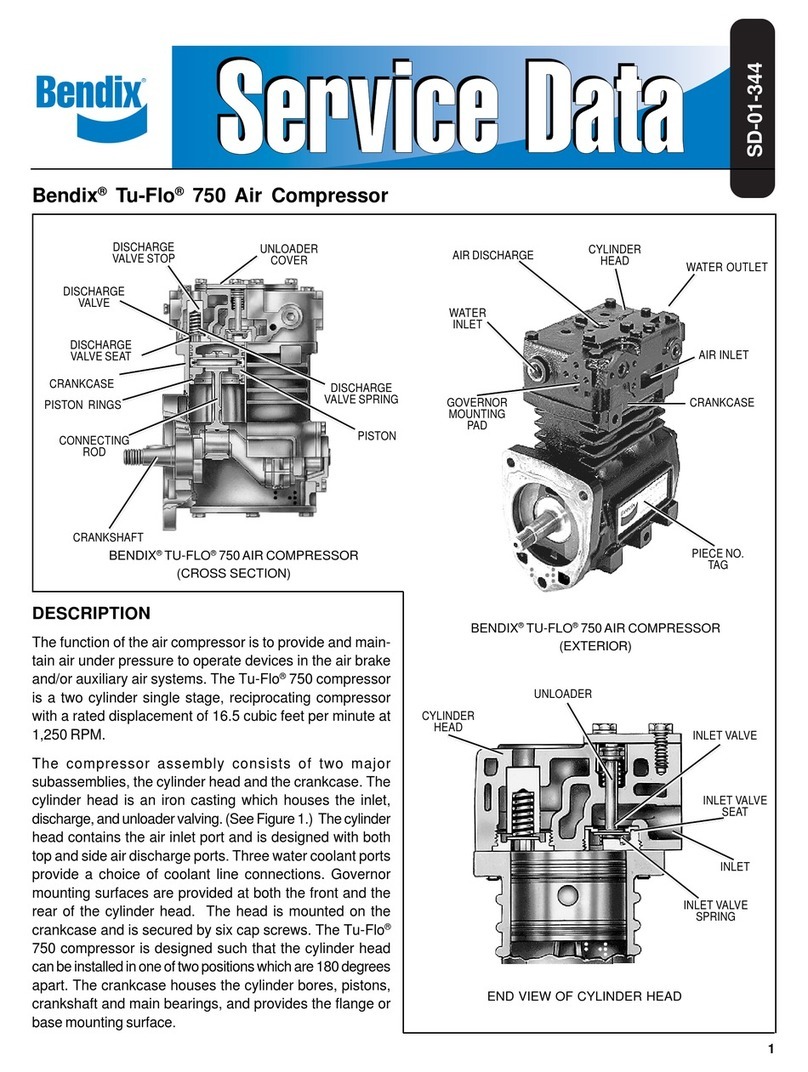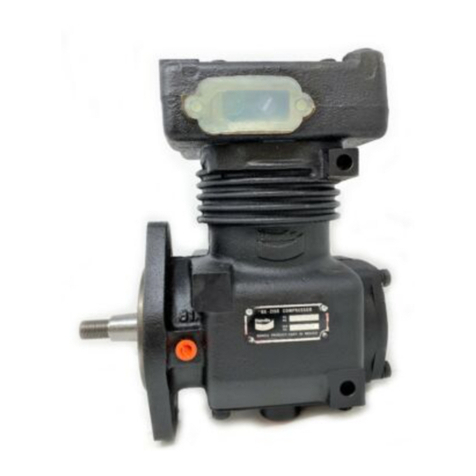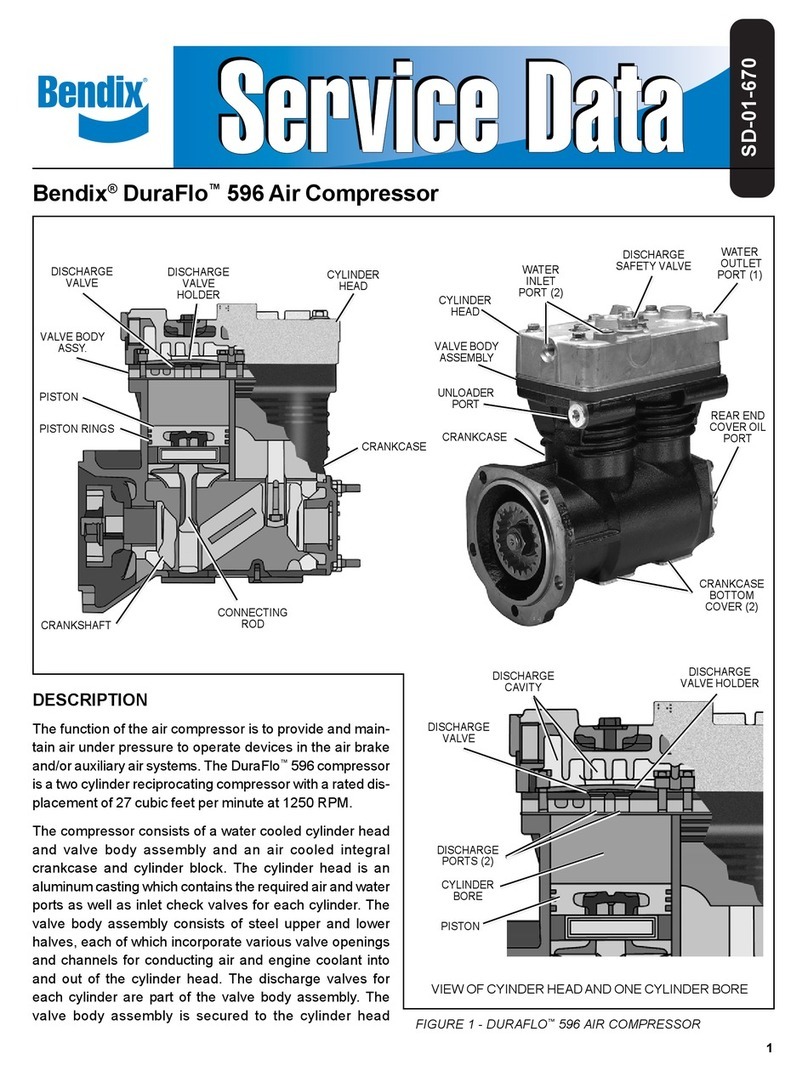
2
COMPRESSOR REMOVAL
These instructions are general and are intended to be a guide.
In some cases additional preparations and precautions are
necessary. In all cases follow the instructions contained in
the vehicle maintenance manual in lieu of the instructions,
precautions, and procedures presented here.
1. Block the wheels of the vehicle and drain the air
pressure from all the reservoirs in the system.
2. Drain the engine cooling system and the cylinder head
of the compressor. Identify and disconnect all air, water,
and oil lines leading to the compressor.
3. Remove as much road dirt and grease from the exterior
of the compressor as possible.
Note: If the compressor is not being removed, stop here
and proceed to PREPARATION FOR DISASSEMBLY,
if not, continue.
4. Remove any supporting bracketing attached to the
compressor and note their positions on the compressor
to aid in reassembly.
5. Remove the ange mounting bolts and remove the
compressor from the vehicle.
PREPARATION FOR DISASSEMBLY
Remove the balance of road dirt and grease from the
exterior of the compressor with a cleaning solvent. Before
the compressor is disassembled, mark the items that are
to be removed or disconnected to show their relationship
when the compressor is assembled. Mark the relationship
of the cylinder head to the valve body assembly.
A convenient method to indicate the above relationships
is to use a metal scribe to mark the parts with numbers or
lines. Do not use marking methods such as chalk that can
be wiped off or obliterated during rebuilding.
HEAD REMOVAL
1. Loosen, but do not remove, the six 13mm x 85mm head
bolts around the circumference of the head.
2. DO NOT REMOVE the two 13mm x 60mm bolts at the
center of the cylinder head.
3. Using a soft mallet, tap the head –under the water outlet
port (See Figure 1)orthedischargetting–tobreakthe
metal gasket seal between the cylinder head and valve
body assembly and the cylinder block (metal gasket
item 6).
4. Remove the six 13mm x 85mm bolts and washers and
lift the cylinder head and valve body assembly off the
cylinder block.
5. Remove and discard the metal gasket (6).
GENERAL SAFETY GUIDELINES
WARNING! PLEASE READ AND
FOLLOW THESE INSTRUCTIONS
TO AVOID PERSONAL INJURY OR DEATH:
When working on or around a vehicle, the following
guidelines should be observed AT ALL TIMES:
▲Park the vehicle on a level surface, apply the parking
brakes and always block the wheels. Always wear personal
protection equipment.
▲Stop the engine and remove the ignition key when working
under or around the vehicle. When working in the engine
compartment, the engine should be shut off and the ignition
key should be removed. Where circumstances require that
the engine be in operation, EXTREME CAUTION should be
used to prevent personal injury resulting from contact with
moving, rotating, leaking, heated or electrically-charged
components.
▲Do not attempt to install, remove, disassemble or
assemble a component until you have read, and thoroughly
understand, the recommended procedures. Use only the
proper tools and observe all precautions pertaining to use
of those tools.
▲If the work is being performed on the vehicle’s air brake
system, or any auxiliary pressurized air systems, make
certain to drain the air pressure from all reservoirs before
beginning ANY work on the vehicle. If the vehicle is
equipped with a Bendix®AD-IS®air dryer system, a Bendix®
DRM™dryer reservoir module, or a Bendix® AD-9si®air
dryer, be sure to drain the purge reservoir.
▲
Following the vehicle manufacturer’s recommended
procedures, deactivate the electrical system in a manner
that safely removes all electrical power from the vehicle
.
▲Never exceed manufacturer’s recommended pressures.
▲Never connect or disconnect a hose or line containing
pressure; it may whip and/or cause hazardous airborne
dust and dirt particles. Wear eye protection. Slowly open
connections with care, and verify that no pressure is
present. Never remove a component or plug unless you are
certain all system pressure has been depleted.
▲Use only genuine Bendix®brand replacement parts,
components and kits. Replacement hardware, tubing, hose,
fi ttings, wiring, etc. must be of equivalent size, type and
strength as original equipment and be designed specifi cally
for such applications and systems.
▲Components with stripped threads or damaged parts should
be replaced rather than repaired. Do not attempt repairs
requiring machining or welding unless specifi cally stated
and approved by the vehicle and component manufacturer.
▲Prior to returning the vehicle to service, make certain all
components and systems are restored to their proper
operating condition.
▲For vehicles with Automatic Traction Control (ATC), the ATC
function must be disabled (ATC indicator lamp should be
ON) prior to performing any vehicle maintenance where
one or more wheels on a drive axle are lifted off the ground
and moving.
▲The power MUST be temporarily disconnected from the
radar sensor whenever any tests USING A DYNAMOMETER
are conducted on a vehicle equipped with a Bendix®
Wingman®system.
▲You should consult the vehicle manufacturer's operating
and service manuals, and any related literature, in
conjunction with the Guidelines above.
